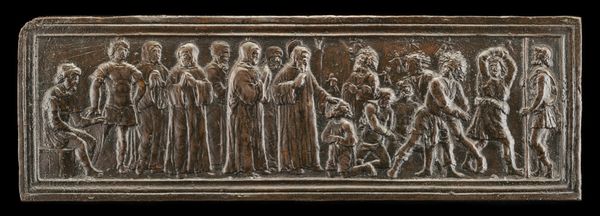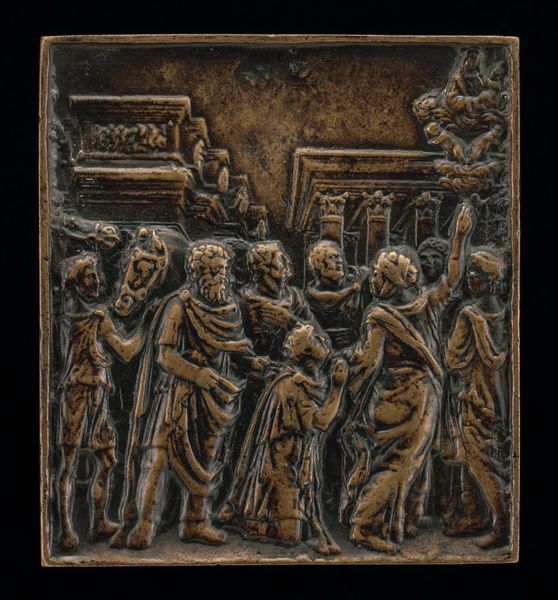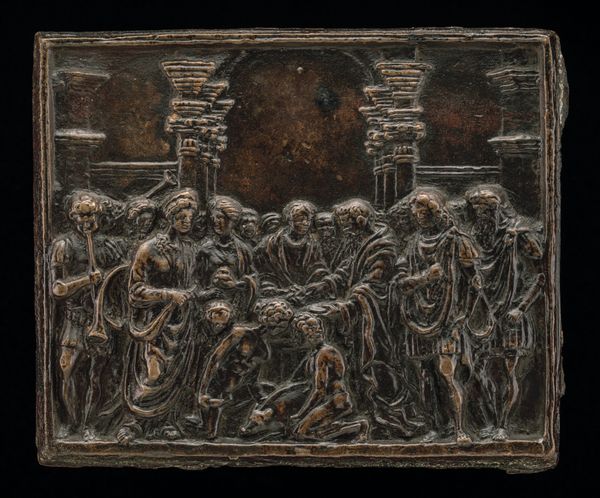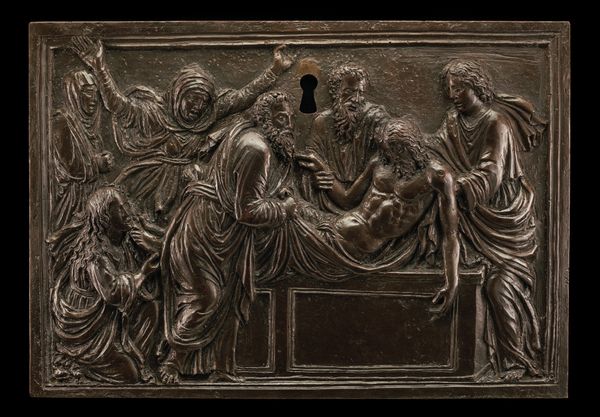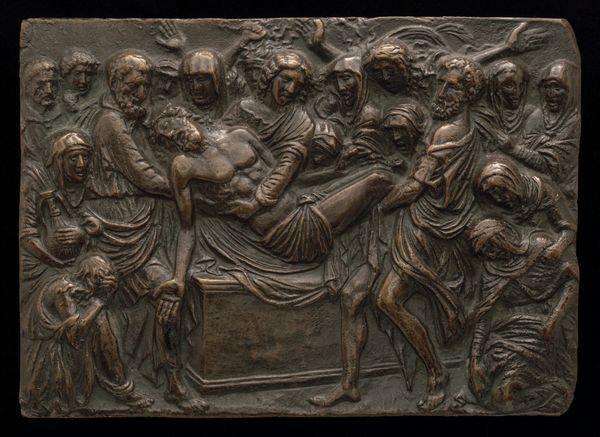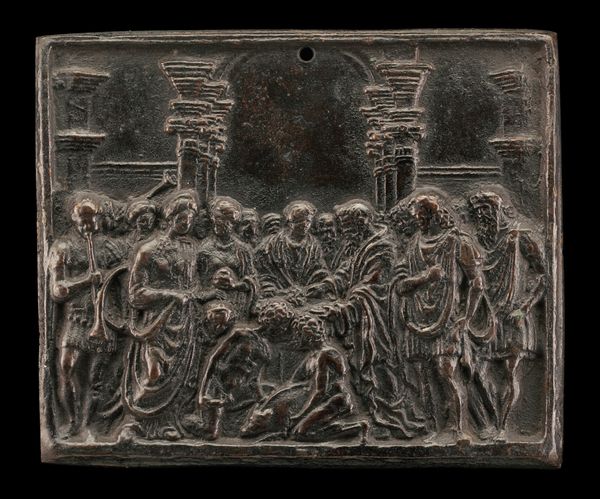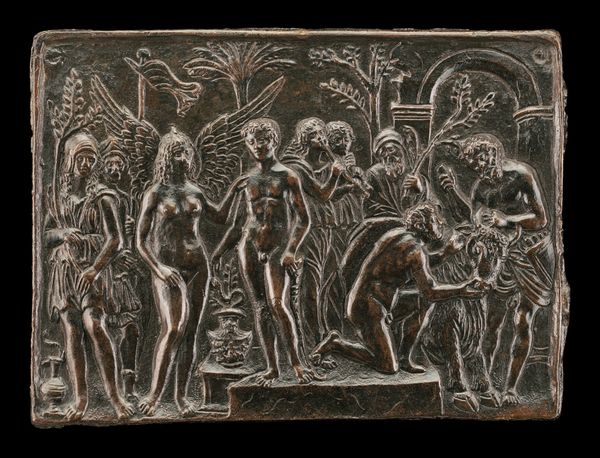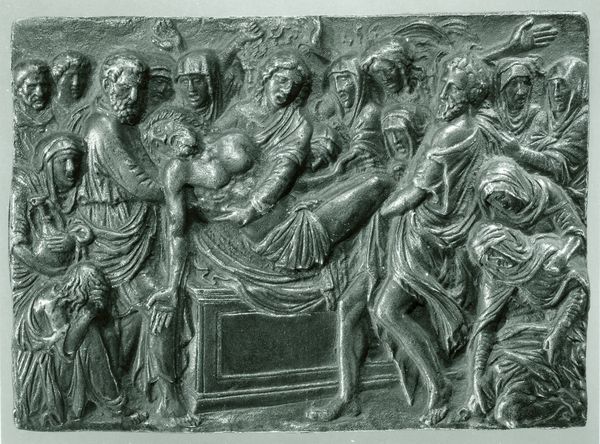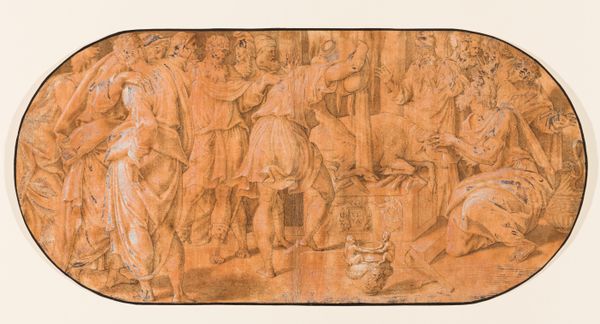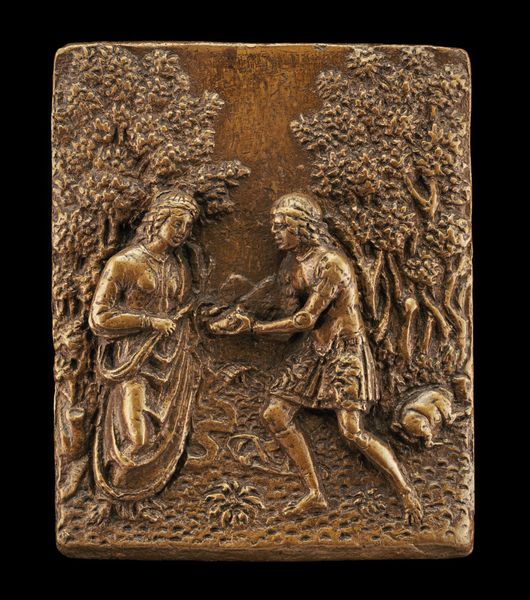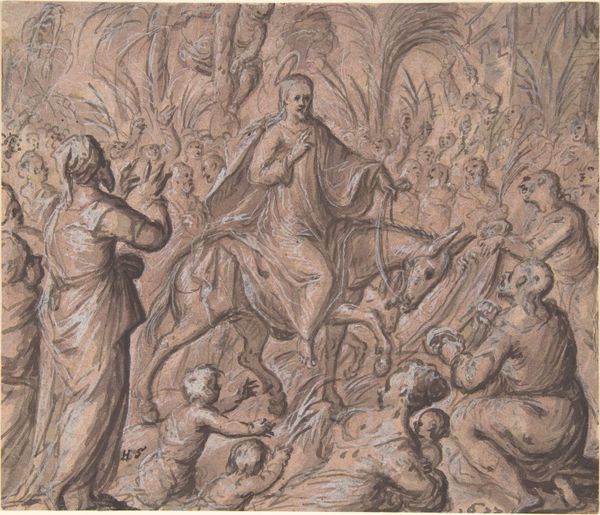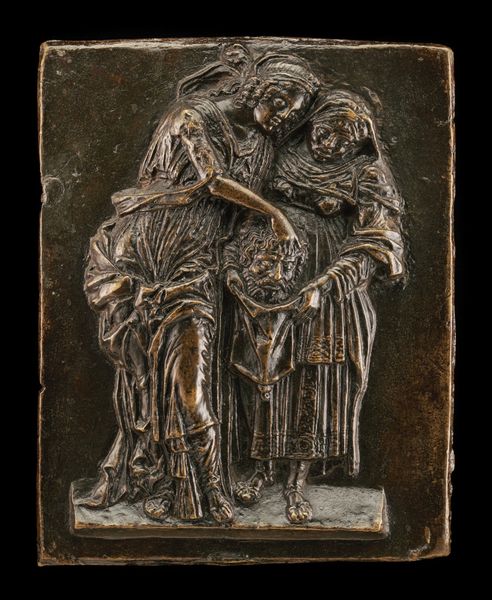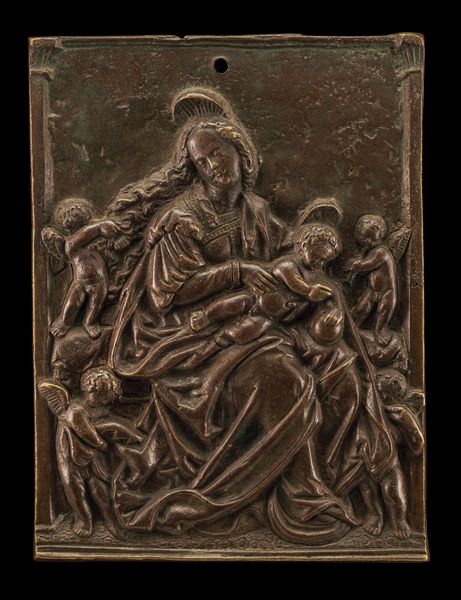
carving, gold, relief, sculpture
#
medieval
#
carving
#
gold
#
relief
#
figuration
#
sculpture
#
carved
#
history-painting
Dimensions: overall: 6 x 8.3 cm (2 3/8 x 3 1/4 in.) gross weight: 36 gr
Copyright: National Gallery of Art: CC0 1.0
Editor: This is "Ecce Homo," a 16th-century relief carving by an anonymous artist, made of gold. It has a stark and formal feeling, a historical scene rendered with highly polished, expensive material. How might we interpret its statement given its craft and context? Curator: I think the key lies in understanding the socioeconomic dynamics of the 16th century. This work presents a stark contrast: depicting Christ’s humiliation, a moment of profound suffering and vulnerability, rendered in opulent gold. Editor: Interesting point. I’d previously focused on just the imagery, with little consideration on material use. How does that influence the narrative, from your perspective? Curator: It implicates the patron and the system that allowed for such luxury while this scene emphasizes poverty and judgment. Who commissioned the work and how does its value reflect that power dynamic? Gold was never a neutral material, and by extension challenges high art vs. craft divide. Editor: So you're suggesting the choice of gold, a costly material requiring specialized labor, highlights not just wealth but also the social and economic structures that supported its creation. Curator: Exactly. Consider also the labor involved – the mining, refining, and carving of the gold. Each step signifies human effort and skill, resources and their availability which are ultimately connected to religious authority. Editor: That makes me rethink the message I was receiving about religious power, that in itself does seem thought-provoking in this work. Curator: Seeing through the material is, at its heart, always about labor. Editor: It brings another dimension, prompting considerations that had not previously crossed my mind about power, resources, and production that affect how meaning is made. Curator: It definitely challenges that traditional line separating function and fine art, revealing embedded social, political statements throughout.
Comments
No comments
Be the first to comment and join the conversation on the ultimate creative platform.
